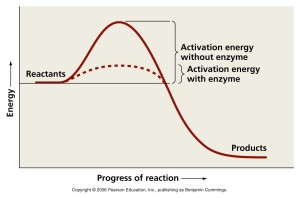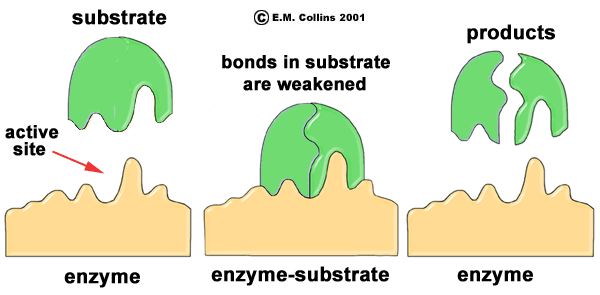Enzymes are proteins that act as catalysts.
Catalyst
- Speeds up a reaction
- Brings the reactant molecules close together and points them in the right direction
- Participates in the reaction, but not consumed in the reaction.
- Lowers the activation energy of a reaction by providing an alternate reaction pathway

- Activation Energy is the energy needed to get a reaction started. Lowering activation energy makes a reaction go faster. In some cases a reaction is so slow that it basically isn’t happening at all, so lowering the activation energy actually starts the reaction.
Functions of Enzymes
- Some enzymes are used in digestion to break down molecules for energy.
- Some enzymes are used to build molecules needed for cell functions.
- Almost any chemical reaction in a cell is helped by an enzyme.
How Enzymes Work
Enzyme proteins tend to be very large molecules. Each one folds up in just the right way so one or more reactant molecules perfectly fits into the protein like a key in a lock.
A molecule that fits into an enzyme is called a substrate.
When those molecules attach, the enzyme causes them to react and then releases them. The enzyme is still there (not consumed in the reaction), so it can now allow more molecules to attach and react.
